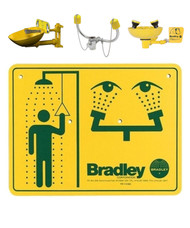Eyewash Station Requirements
Ensuring workplace safety is a top priority for any organization, and having the proper emergency equipment can make all the difference. Eyewash stations are a critical component of workplace safety in environments where hazardous chemicals, debris, or particles pose risks to employee health. This article outlines the key eyewash station requirements to help businesses remain compliant and protect their teams.
The Importance of Eyewash Stations
In workplaces with hazardous substances, the eyes are particularly vulnerable to injury. Exposure to chemicals, dust, or debris can cause severe damage within seconds. Eyewash stations provide immediate relief by delivering a steady flow of water to flush out irritants, minimizing the risk of long-term injury. Quick action is often the difference between full recovery and permanent damage.
OSHA and ANSI Eyewash Station Requirements
Both the Occupational Safety and Health Administration (OSHA) and the American National Standards Institute (ANSI) establish critical guidelines for eyewash stations to ensure workplace safety and compliance. These standards address when and where eyewash stations are required, as well as technical specifications for their operation.
Both the Occupational Safety and Health Administration (OSHA) and the American National Standards Institute (ANSI) set guidelines for eyewash stations:
OSHA Standards: OSHA mandates eyewash stations in areas where employees are exposed to harmful substances. These requirements are outlined in OSHA 29 CFR 1910.151(c).
ANSI Z358.1-2014 Compliance: ANSI provides detailed standards, specifying flow rates, temperature, and accessibility for eyewash stations.
By adhering to these standards, employers ensure their eyewash stations are functional and meet safety regulations.
Types of Eyewash Stations
Selecting the right type of eyewash station depends on your workplace environment, potential hazards, and the layout of your facility. Here’s a breakdown of the main types of eyewash stations, each designed to address specific needs:
Plumbed Eyewash Stations: These are permanently installed units connected directly to a building’s water supply. They are ideal for high-risk areas with a stable infrastructure, providing a continuous flow of water for the required 15-minute duration. Plumbed stations often meet ANSI standards for flow rate and temperature, making them a reliable choice for industrial settings and laboratories.
Portable Eyewash Stations: Portable units are lightweight and easily relocated, making them ideal for temporary worksites, construction zones, or areas without access to plumbing. They are typically filled with a saline solution or clean water and are designed for quick and easy deployment.
Combination Units: These stations pair an eyewash component with a drenching shower, offering full-body decontamination in addition to eye flushing. Combination units are essential in environments where exposure to corrosive or hazardous chemicals poses risks to both the eyes and skin, such as chemical manufacturing facilities.
Self-Contained Units:These units operate independently of plumbing and use pre-filled water or saline tanks. Self-contained stations are especially useful in remote locations or areas where plumbed solutions are not feasible. They often include features like heated water tanks or insulation to ensure compliance with temperature requirements.
Each type of eyewash station plays a vital role in workplace safety. Assessing your specific needs ensures you select a solution that provides maximum protection and compliance with safety standards. Regular maintenance and proper placement further enhance their effectiveness.
Flow Rate and Temperature Requirements
According to ANSI standards, eyewash stations must meet specific flow rate and temperature requirements to ensure effective use during emergencies. Each station must deliver a steady flow of at least 0.4 gallons per minute for a continuous 15 minutes to thoroughly flush out contaminants from the eyes.
Additionally, the water must be tepid, maintained at a temperature between 60°F and 100°F, to prevent thermal shock or further irritation to the eyes. To ensure ease of use in high-stress situations, eyewash stations are required to operate hands-free once activated, providing uninterrupted flushing without the need for manual intervention. These standards ensure that eyewash stations are practical and efficient in protecting employees from potential eye injuries.
When Are Eyewash Stations Required?
Eyewash stations are required in any workspace where employees are at risk of chemical exposure, including:
-Laboratories
-Manufacturing plants
-Construction sites
-Healthcare facilities
OSHA emphasizes the need for "quick drenching or flushing" within 10 seconds of the hazard area, making strategic placement crucial.
ADA Requirements for Eyewash Stations
Compliance with the Americans with Disabilities Act (ADA) ensures eyewash stations are accessible to all employees:
-Activation controls must be easy to operate.
-Stations should be positioned at an appropriate height, typically 33-45 inches from the floor.
Maintenance and Inspection Requirements
Regular maintenance is critical to ensuring eyewash stations are always functional and ready to protect employees during emergencies. Neglecting upkeep can result in malfunctioning equipment, leading to non-compliance and potential harm. Here’s how to maintain eyewash stations effectively:
Conduct Weekly Activation Tests: Each eyewash station should be tested weekly to verify proper flow and operation. This process helps clear any buildup of sediment or stagnant water in the lines, ensuring a consistent and effective flow. Make note of any irregularities and address them immediately.
Perform Annual Inspections to Confirm ANSI Compliance: A comprehensive inspection should be conducted at least once a year to ensure the station meets all ANSI Z358.1 requirements. This includes verifying proper flow rate, temperature, and hands-free operation, as well as inspecting the overall condition of the equipment for any signs of wear or damage. Document these inspections to maintain compliance records.
Replace Expired Fluid in Self-Contained Units: For portable or self-contained eyewash stations, the saline or water solution must be replaced according to the manufacturer’s expiration date. Using expired fluid can compromise the effectiveness of the station, risking further irritation or contamination. Schedule regular checks to replace fluids and clean the unit’s reservoir as needed.
By implementing these maintenance practices, employers ensure their eyewash stations remain functional, compliant, and ready to provide immediate relief in emergencies, protecting both employees and the organization from risks.
Training and Education for Employees
Training employees on eyewash station usage is essential for workplace safety. They should learn proper activation and flushing procedures, including how long to flush and when to seek medical attention. Providing training helps employees respond effectively during emergencies:
-Teach proper eyewash station usage.
-Conduct regular drills to reinforce procedures.
-Display clear, highly visible signage near all eyewash stations.
Common Compliance Mistakes and How to Avoid Them
Avoiding compliance mistakes is key to ensuring eyewash stations are effective and meet regulatory standards. Below are common pitfalls and how to address them:
Neglecting Regular Maintenance and Inspections: Over time, eyewash stations can become clogged, damaged, or ineffective due to infrequent testing. Failing to maintain these stations can lead to non-compliance and malfunction during emergencies. To avoid this, establish a weekly activation schedule and conduct annual inspections to ensure proper flow rate, cleanliness, and functionality.
Placing Eyewash Stations Too Far from Hazard Zones: Eyewash stations must be located within a 10-second walking distance from hazardous areas. Placing them further away, or in areas obstructed by furniture or equipment, can delay critical treatment. To ensure compliance, map out hazard zones and strategically position stations in clear, unobstructed locations on the same level as the work area.
Using Non-Compliant Flow Rates or Water Temperatures: Eyewash stations must deliver a continuous flow of 0.4 gallons per minute for at least 15 minutes and provide tepid water (60°F–100°F). Non-compliant stations may fail to properly flush contaminants or cause discomfort, reducing their effectiveness. Regularly test and adjust the flow and temperature to meet ANSI standards.
Failing to Stay Informed About Standards: OSHA and ANSI guidelines can change, and being unaware of updates may result in non-compliance. Keep up with regulatory changes, and invest in training and resources to ensure your facility consistently meets the latest requirements.
By addressing these common mistakes, employers can ensure their eyewash stations remain compliant, effective, and ready to protect employees when emergencies arise.
Eyewash Stations from Berl's
At Berl's, we understand the importance of workplace safety. Our range of OSHA-compliant eyewash stations ensures your team is protected in hazardous environments. From plumbed units to portable solutions, we provide equipment tailored to your needs.

